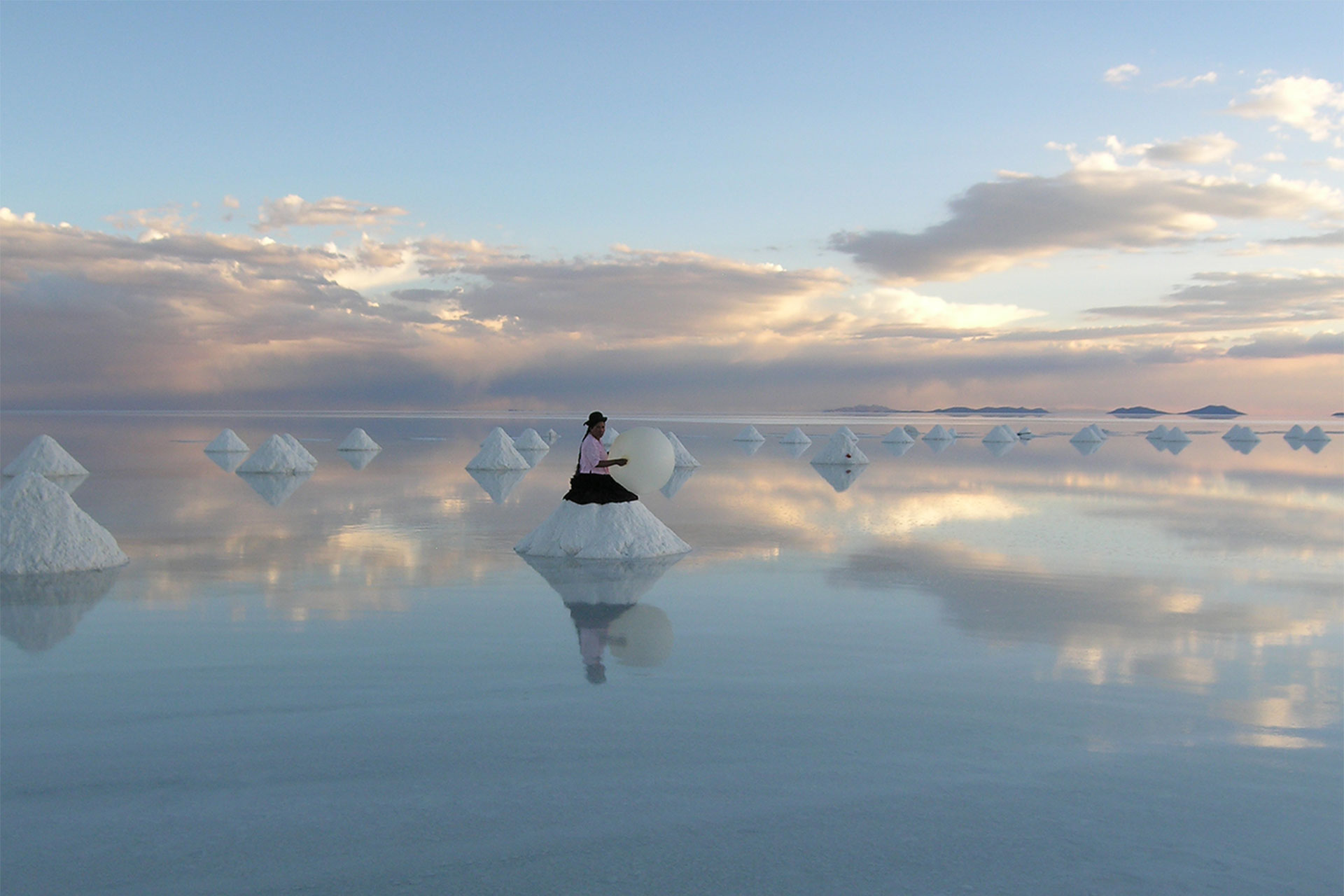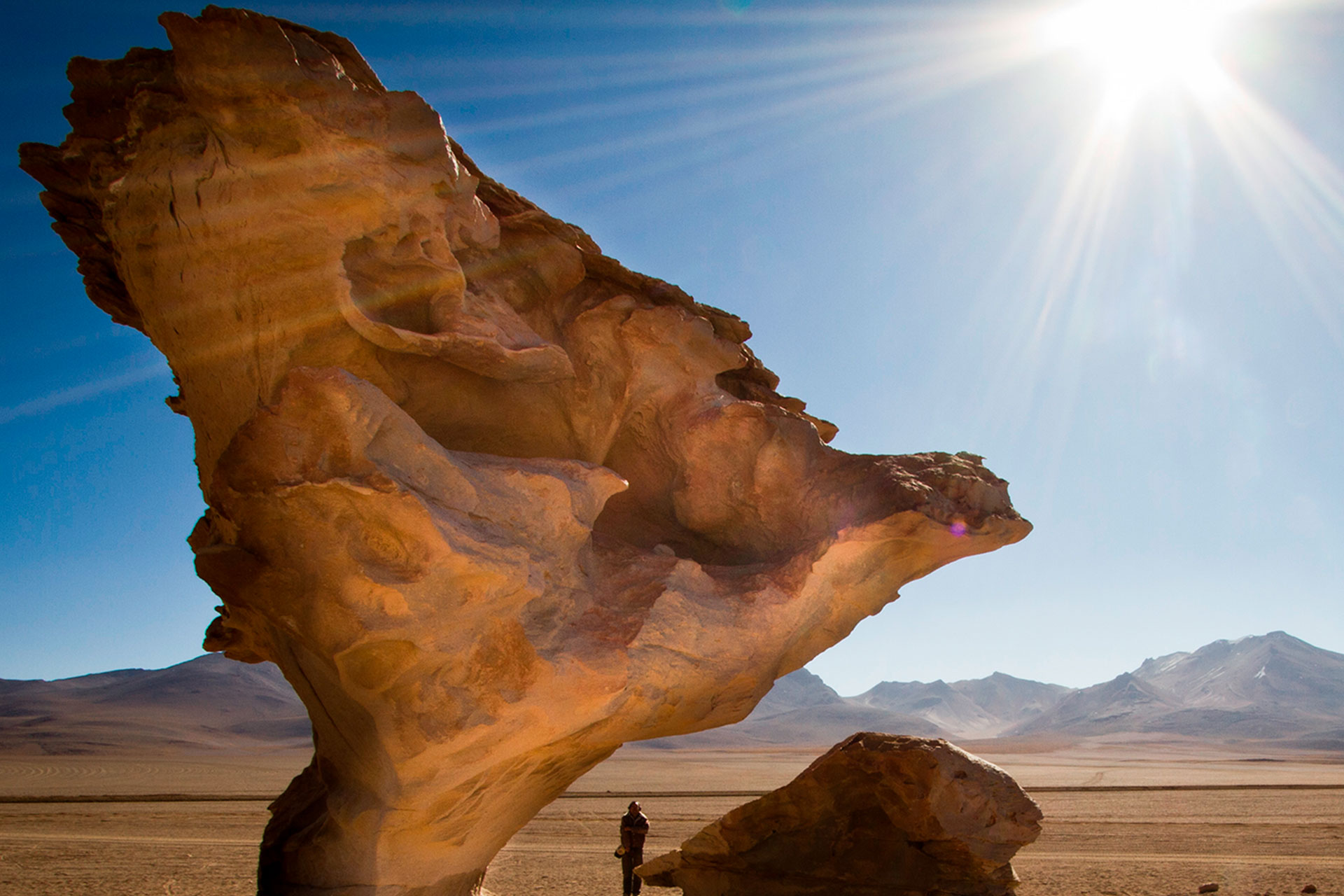Potosi
Discover the department of Potosi, one of the most amazing regions of the country. Bolivia, located more than 4,000 meters above sea level. Its capital, Potosi, declared a World Heritage Site, in colonial times was one of the richest and most populated cities in the world thanks to the silver mining of Cerro Rico, which still dominates its landscape and symbolizes its history. Today, the city maintains a valuable colonial architectural heritage, with museums, churches and traditions that narrate its past. The department is also home to natural attractions such as the Salar de Uyuni, the largest salt desert on the planet, the Torotoro National Park, with impressive caves and fossilized dinosaur footprints. Potosi offers a unique experience, where cultural and natural wealth coexist in an environment full of history and wonder.
Connectivity
You can reach Potosi by road from the main cities of Bolivia, such as La Paz, Sucre, Oruro and Cochabamba, The trip is made through routes that connect directly with Potosi, the capital of the department. The overland trip varies between 4 and 10 hours, depending on the starting point. For those visiting the Salar de Uyuni, there are daily buses from La Paz and Potosi. Oruro, in addition to an airport at Uyuni with regular flights from La Paz, which facilitates access to this area. Potosí has land and air transportation options that allow a smooth and safe connection for travelers.
Potosi
Subscribe to receive news about Caminos Andinos
Temperature
Between 3°C and 17°C
Weather
Cold
More destinations
Activities and attractions
Potosí is a fascinating destination that combines history, culture and nature. In its streets you can breathe the colonial legacy, with museums and architectural gems such as the Casa de la Moneda. The Salar de Uyuni, a unique natural spectacle, and the colorful lagoons of Potosí offer breathtaking scenery. Venture into the Torotoro National Park and enjoy its traditional gastronomy, such as cazuela and aji de pataskha, and don't forget to try Singani. Potosí awaits you with unforgettable experiences.
Panoramic view of Potosí
PHOTO: Vice-Ministry of Tourism Bolivia
Discover what we do
-
-
CULTURE
Potosí: City with colonial heritage
Potosi is an ideal destination for those who love the history and architecture. Its streets preserve an impressive mestizo baroque legacy, visible in churches such as San Lorenzo, La Merced and La Compañía de Jesús, true artistic jewels. The city is an open-air museum, where the colonial convents and the emblematic Casa de la Moneda, one of the most important museums in the world, also stand out. Bolivia. To walk through the Plaza 10 de Noviembre is to relive the splendor of a unique historic city in America.
-
-
NATURE
Uyuni Salt Flat: A Natural Mirror
The Salar de Uyuni is one of the most impressive destinations in the world and a must-see in Bolivia. In the dry season, it is traveled by 4×4 over an immense salt desert, with stops at Incahuasi Island and salt hotels. In the rainy season, it becomes a giant mirror of the sky. Ideal for creative photography, watching flamingos and enjoying unique sunsets. A natural spectacle that leaves you speechless.
Colored lagoons:
The colorful lagoons in Potosi are a must-see experience for nature lovers. Laguna Colorada, with reddish waters, and Laguna Verde, at the foot of the Licancabur volcano, offer unique landscapes in the altiplano. They are located 6 hours from the Salar de Uyuni and are part of the 4×4 tours that travel through the Eduardo Avaroa Reserve, where you can also see geysers, hot springs and impressive deserts. An unforgettable trip through extreme landscapes.
Torotoro National Park: Exploration trails:
Torotoro National Park, in northern Potosi, is a must-see destination for adventure and nature lovers. nature. Here you can hike through deep canyons, explore caves with amazing formations and discover fossilized dinosaur footprints dating back millions of years. You can also visit the impressive Vergel Canyon, with waterfalls and natural pools. Torotoro offers unique experiences in a spectacular natural environment, ideal for ecotourism, hiking and geological exploration.
-
-
ANCESTRAL COMMUNITIES AND RURALITY
Indigenous communities and peoples
In Potosí, the following are found ancestral communities Quechua and Aymara, with deep roots in the Andean region. The Quechua, present in the Chayanta region and around the city of Potosí, preserve their cultural and linguistic traditions. The Aymara, with a strong presence in the areas near the mountain range, also keep their customs alive.
Festivities
Potosí's most outstanding festivities immerse tourists in the rich Andean culture. The Fiesta de Ch'utillos, in August, is the World Heritage Site and celebrates San Bartolomé and San Ignacio de Loyola with dances, music and gastronomy. The Potosi Carnival, in February, stands out for its colorful parades and traditional dances. A unique cultural experience not to be missed.
-
-
GASTRONOMY
Traditional cuisine:
The gastronomy of Potosí is a journey of authentic flavors that you can't miss. The cazuela, a delicious meat stew with potatoes and vegetables, aji de pataskha, a spicy dish with lamb meat, and chambergos, a meat stew with rice, are just some of the traditional delicacies. You can also enjoy calapurka, a thick soup with meat, and chajchu, a dish with pork accompanied by potatoes and mote. An Andean feast that will captivate you.
Singani: Flavors of origin and tradition
Discover the singani from Potosí, a distilled wine with Denomination of Origin that offers an authentic and refreshing flavor. Made in the valleys of Turuchipa, Cotagaita and Vicchoca with Muscatel of Alexandria grapes, it preserves the tradition that began centuries ago with the Augustinian monks. Although much of the production has moved to Tarija, Potosí continues to be the historical cradle of singani and an ideal destination to experience its original essence.
-
-
CRAFTS
Potosí also stands out for its vibrant handicraft production, driven by groups such as ArteNativo, made up of rural women who hand weave sheep, llama and alpaca wool. The city offers a wide variety of handicrafts in basketry, ceramics, jewelry, wood and seeds. Every December, the Plurinational Crafts Fair brings together more than 100 exhibitors from all over the country at the Multipurpose Fairground, becoming a key point for cultural tourism.
CULTURE
Potosí: City with colonial heritage
Potosi is an ideal destination for those who love the history and architecture. Its streets preserve an impressive mestizo baroque legacy, visible in churches such as San Lorenzo, La Merced and La Compañía de Jesús, true artistic jewels. The city is an open-air museum, where the colonial convents and the emblematic Casa de la Moneda, one of the most important museums in the world, also stand out. Bolivia. To walk through the Plaza 10 de Noviembre is to relive the splendor of a unique historic city in America.
NATURE
Uyuni Salt Flat: A Natural Mirror
The Salar de Uyuni is one of the most impressive destinations in the world and a must-see in Bolivia. In the dry season, it is traveled by 4×4 over an immense salt desert, with stops at Incahuasi Island and salt hotels. In the rainy season, it becomes a giant mirror of the sky. Ideal for creative photography, watching flamingos and enjoying unique sunsets. A natural spectacle that leaves you speechless.
Colored lagoons:
The colorful lagoons in Potosi are a must-see experience for nature lovers. Laguna Colorada, with reddish waters, and Laguna Verde, at the foot of the Licancabur volcano, offer unique landscapes in the altiplano. They are located 6 hours from the Salar de Uyuni and are part of the 4×4 tours that travel through the Eduardo Avaroa Reserve, where you can also see geysers, hot springs and impressive deserts. An unforgettable trip through extreme landscapes.
Torotoro National Park: Exploration trails:
Torotoro National Park, in northern Potosi, is a must-see destination for adventure and nature lovers. nature. Here you can hike through deep canyons, explore caves with amazing formations and discover fossilized dinosaur footprints dating back millions of years. You can also visit the impressive Vergel Canyon, with waterfalls and natural pools. Torotoro offers unique experiences in a spectacular natural environment, ideal for ecotourism, hiking and geological exploration.
ANCESTRAL COMMUNITIES AND RURALITY
Indigenous communities and peoples
In Potosí, the following are found ancestral communities Quechua and Aymara, with deep roots in the Andean region. The Quechua, present in the Chayanta region and around the city of Potosí, preserve their cultural and linguistic traditions. The Aymara, with a strong presence in the areas near the mountain range, also keep their customs alive.
Festivities
Potosí's most outstanding festivities immerse tourists in the rich Andean culture. The Fiesta de Ch'utillos, in August, is the World Heritage Site and celebrates San Bartolomé and San Ignacio de Loyola with dances, music and gastronomy. The Potosi Carnival, in February, stands out for its colorful parades and traditional dances. A unique cultural experience not to be missed.
GASTRONOMY
Traditional cuisine:
The gastronomy of Potosí is a journey of authentic flavors that you can't miss. The cazuela, a delicious meat stew with potatoes and vegetables, aji de pataskha, a spicy dish with lamb meat, and chambergos, a meat stew with rice, are just some of the traditional delicacies. You can also enjoy calapurka, a thick soup with meat, and chajchu, a dish with pork accompanied by potatoes and mote. An Andean feast that will captivate you.
Singani: Flavors of origin and tradition
Discover the singani from Potosí, a distilled wine with Denomination of Origin that offers an authentic and refreshing flavor. Made in the valleys of Turuchipa, Cotagaita and Vicchoca with Muscatel of Alexandria grapes, it preserves the tradition that began centuries ago with the Augustinian monks. Although much of the production has moved to Tarija, Potosí continues to be the historical cradle of singani and an ideal destination to experience its original essence.
CRAFTS
Potosí also stands out for its vibrant handicraft production, driven by groups such as ArteNativo, made up of rural women who hand weave sheep, llama and alpaca wool. The city offers a wide variety of handicrafts in basketry, ceramics, jewelry, wood and seeds. Every December, the Plurinational Crafts Fair brings together more than 100 exhibitors from all over the country at the Multipurpose Fairground, becoming a key point for cultural tourism.
 Skip to content
Skip to content






